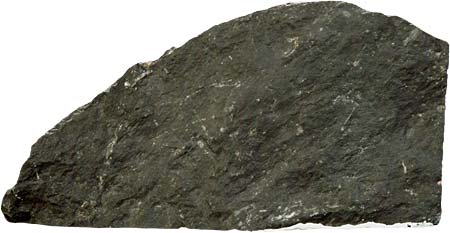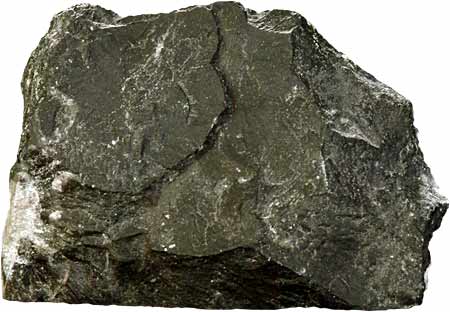Argillite
Argillite is highly indurated mudstone. Along with greywacke, it comprises the basement rock of New Zealand, and so is an important rock type throughout the country. Because it has been subjected to significant amounts of tectonic movement over a long period of time (some New Zealand argillite is over 300 million years old), argillite is commonly extremely deformed, fractured, and veined. Although similar to shale, argillite is generally not fissile, i.e. does not preferentially break along closely spaced bedding planes. It differs from slate in its lack of foliation.

argillite |
Other specimens - Click the thumbnails to enlarge 

|
Grain size - < 0.06mm, clasts not visible to the naked eye.
Hardness - hard.
Colour - grey to black, also green and red.
Clasts - generally a mixture of clay minerals with any of quartz, feldspar ( orthoclase, plagioclase), mica ( biotite, chlorite, muscovite).
Other features - smooth to touch.
Uses - can be carved into ornaments, statuary etc.
New Zealand occurrences - main axial ranges of the North and South Islands; interbedded with greywacke.

